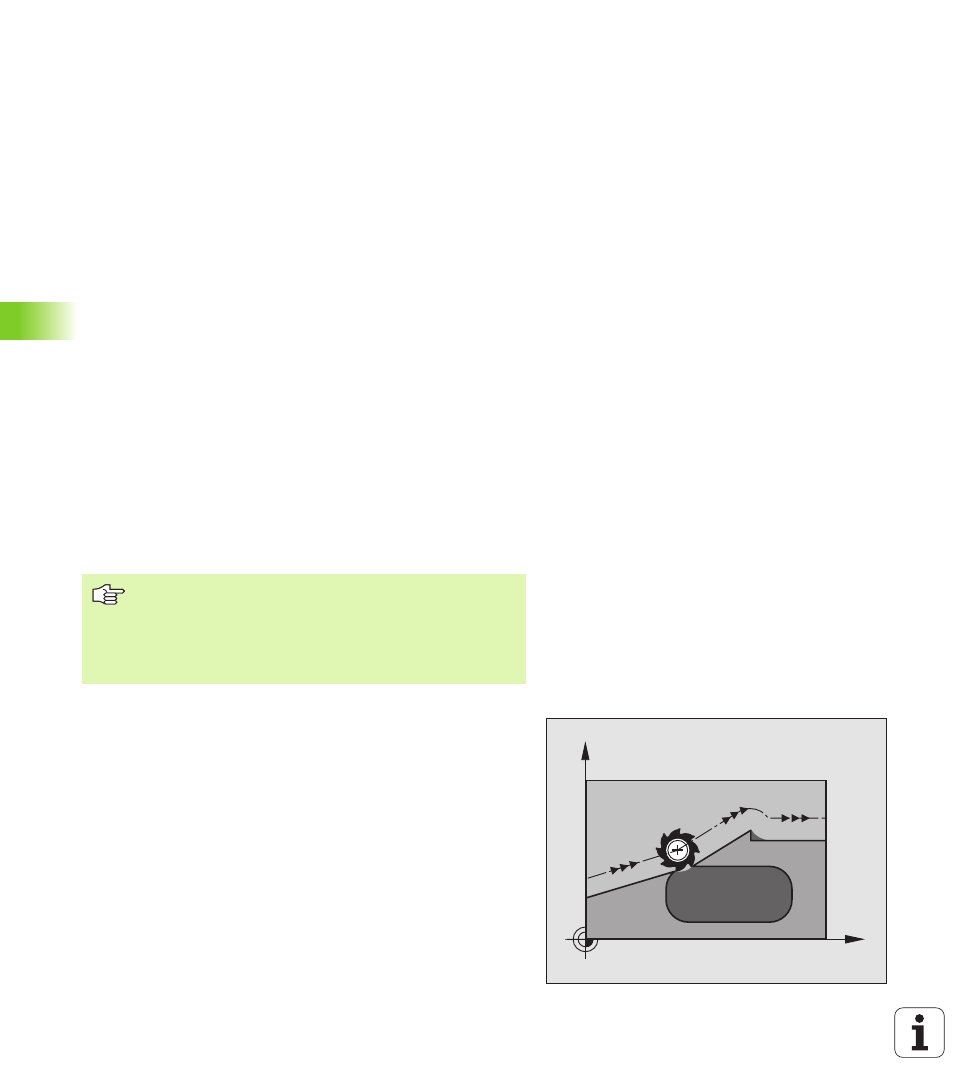Feed rate at circular arcs: m109/m110/m111 – HEIDENHAIN iTNC 530 (340 420) User Manual
Page 220

192
7 Programming: Miscellaneous-Functions
7.
4 Miscellaneous F
unctions f
o
r Cont
our
ing Beha
vior
Feed rate in millimeters per spindle revolution:
M136
Standard behavior
The TNC moves the tool at the programmed feed rate F in mm/min.
Behavior with M136
With M136, the TNC does not move the tool in mm/min, but rather at
the programmed feed rate F in millimeters per spindle revolution. If
you change the spindle speed by using the spindle override, the TNC
changes the feed rate accordingly.
Effect
M136 becomes effective at the start of block.
You can cancel M136 by programming M137.
Feed rate at circular arcs: M109/M110/M111
Standard behavior
The TNC applies the programmed feed rate to the path of the tool center.
Behavior at circular arcs with M109
The TNC adjusts the feed rate for circular arcs at inside and outside
contours such that the feed rate at the tool cutting edge remains
constant.
Behavior at circular arcs with M110
The TNC keeps the feed rate constant for circular arcs at inside
contours only. At outside contours, the feed rate is not adjusted.
Effect
M109 and M110 become effective at the start of block.
To cancel M109 and M110, enter M111.
Calculating the radius-compensated path in
advance (LOOK AHEAD): M120
Standard behavior
If the tool radius is larger than the contour step that is to be machined
with radius compensation, the TNC interrupts program run and
generates an error message. M97(see “Machining small contour steps:
M97” on page 189): Although you can use M97 to inhibit the error
message, this will result in dwell marks and will also move the corner.
If the programmed contour contains undercut features, the tool may
damage the contour.
M110 is also effective for the inside machining of circular
arcs using contour cycles. If you define M109 or M110
before calling a machining cycle, the adjusted feed rate is
also effective for circular arcs within machining cycles. The
initial state is restored after finishing or aborting a
machining cycle.
X
Y
